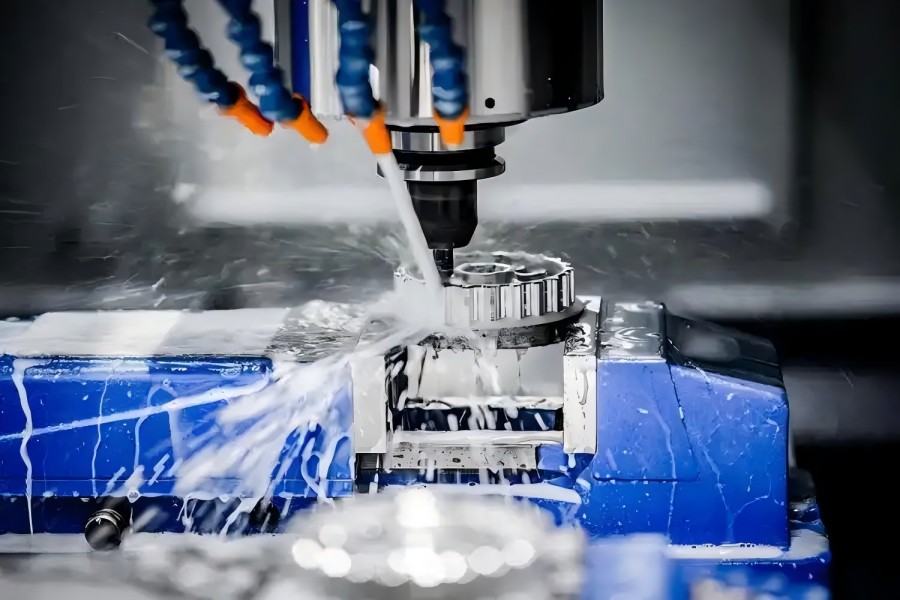News Categories
Contact Us
020-86988980
- Guangzhou Sinoth Import and Export Co., LTD
Tel: 020-8968-8980
Website:www.gzsynoth.com
Email: belinda@dginfa.com(24 hours online)
Phone: +86 189 2740 6786
Address: No 5, Jinshi Three Street, Shiling Town, Huadu District,Guangzhou City, Guangdong Province
News
Current Location:Home > News > News
Understanding CNC Machine Tolerances and Their Impact on Part Accuracy
Add Time:2025-06-14
What Are CNC Machine Tolerances?
CNC machine tolerances refer to the permissible limit of variation in a physical dimension of a manufactured part. These tolerances define how much a part's actual measurement can deviate from its nominal (intended) dimension while still being acceptable for its intended function.
Types of Tolerances in CNC Machining
. Dimensional Tolerances: Allowable variations in length, width, height, or diameter
. Geometric Tolerances: Allowable variations in form, orientation, or position
. Surface Finish Tolerances: Allowable variations in surface texture and roughness
 Standard Tolerance Ranges
Standard Tolerance Ranges
- Rough machining: ±0.030" (0.76 mm)
- Standard machining: ±0.010" (0.25 mm)
- Precision machining: ±0.005" (0.13 mm)
- High precision machining: ±0.001" (0.025 mm) or better
Factors Affecting CNC Tolerances
. Machine Capability: Higher-end CNC machines can hold tighter tolerances
. Tooling Quality: Worn or low-quality tools increase variation
. Material Properties: Some materials are more stable during machining
. Environmental Conditions: Temperature fluctuations can affect dimensions
. Operator Skill: Proper setup and fixturing are critical
. Part Design: Complex geometries are harder to hold to tight tolerances
Impact of Tolerances on Part Accuracy
. Functional Fit: Tolerances determine how parts interact with each other
. Assembly Requirements: Looser tolerances may require adjustment during assembly
. Performance Characteristics: Critical in high-precision applications like aerospace
. Manufacturing Cost: Tighter tolerances significantly increase production costs
. Quality Control: Tighter tolerances require more inspection time and equipment
Best Practices for Tolerance Specification
- Only specify as tight as necessary for the part's function
- Consider the manufacturing process capabilities
- Account for potential material movement post-machining
- Use geometric dimensioning and tolerancing (GD&T) when appropriate
- Communicate clearly with your machining provider about critical dimensions
Understanding and properly specifying tolerances is crucial for balancing part functionality with manufacturing feasibility and cost-effectiveness.
CNC machine tolerances refer to the permissible limit of variation in a physical dimension of a manufactured part. These tolerances define how much a part's actual measurement can deviate from its nominal (intended) dimension while still being acceptable for its intended function.
Types of Tolerances in CNC Machining
. Dimensional Tolerances: Allowable variations in length, width, height, or diameter
. Geometric Tolerances: Allowable variations in form, orientation, or position
. Surface Finish Tolerances: Allowable variations in surface texture and roughness

- Rough machining: ±0.030" (0.76 mm)
- Standard machining: ±0.010" (0.25 mm)
- Precision machining: ±0.005" (0.13 mm)
- High precision machining: ±0.001" (0.025 mm) or better
Factors Affecting CNC Tolerances
. Machine Capability: Higher-end CNC machines can hold tighter tolerances
. Tooling Quality: Worn or low-quality tools increase variation
. Material Properties: Some materials are more stable during machining
. Environmental Conditions: Temperature fluctuations can affect dimensions
. Operator Skill: Proper setup and fixturing are critical
. Part Design: Complex geometries are harder to hold to tight tolerances
Impact of Tolerances on Part Accuracy
. Functional Fit: Tolerances determine how parts interact with each other
. Assembly Requirements: Looser tolerances may require adjustment during assembly
. Performance Characteristics: Critical in high-precision applications like aerospace
. Manufacturing Cost: Tighter tolerances significantly increase production costs
. Quality Control: Tighter tolerances require more inspection time and equipment
Best Practices for Tolerance Specification
- Only specify as tight as necessary for the part's function
- Consider the manufacturing process capabilities
- Account for potential material movement post-machining
- Use geometric dimensioning and tolerancing (GD&T) when appropriate
- Communicate clearly with your machining provider about critical dimensions
Understanding and properly specifying tolerances is crucial for balancing part functionality with manufacturing feasibility and cost-effectiveness.



